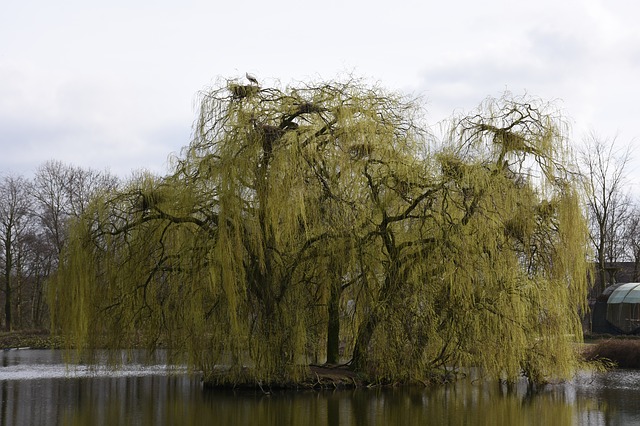Trees are a natural, renewable resource that we can’t live without. As long as the trees in your yard aren’t causing any issues, there should be no cause for concern. However, some homeowners in Maryland experience the downsides of invasive tree species during the fall season. Take a look at the most common invasive trees and give Nelson Tree Specialist a call if you notice any causing problems in your yard:

Marylands most common invasive tree species
Weeping Willow
The Weeping Willow is a well-loved invasice tree species that is known for its long, flowering branches that give it quite the majestic look. Though a weeping willow tree can give your yard a beautiful feel, it is often more pleasant when viewed in nature, as it can be difficult to maintain. This species is known for dropping a decent amount of twigs and branches throughout all four seasons. Additionally, weeping willows attract gypsy moths and black canker disease.
Eastern Cottonwood/Poplar
The Eastern Cottonwood or Poplar tree grows fast and large, which helps to classify it as an invasive species in Maryland. This species’ roots are prone to invading sewer systems and, due to the weak branch structure, shed both leaves and twigs during the fall months, creating a mess in your yard. The female Poplar produces a large quantity of fluffy seeds and sheds them often, giving you even more to do on yard-work days.
Silver Maple
It’s not uncommon for Silver Maple trees to be diseased, as they are prone to a variety of diseases and fungi. If its leaves are not raked often during the fall and instead left on your lawn during the winter, the leaves will rot and the fungus Anthracnose can form. Diligent maintenance in the fall is required in order to keep these trees from becoming diseased by fungi.
Sycamore
The Sycamore tree is another beauty that can be found throughout Maryland that is unfortunately known to cause problems for homeowners. Anthracnose can also be found on these trees, and often the disease has the strength to kill the American Sycamore, though other varieties are only minutely affected by it. This species sheds its bark frequently, and features seed pods that hang from its branches, which might sound aesthetically pleasing, but it just means more messes to clean up in your yard when fall comes around.
Your Professional Maryland Tree Specialists
If you’re currently experiencing the effects of an invasive tree species, your best course of action is to call your local arborist and tree removal specialist in Maryland. Nelson Tree Specialists are here for all of your tree care, maintenance, and removal needs, and we can advise you on how to best deal with those troublesome trees during the fall season. Contact us today for more information.
